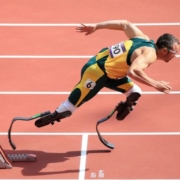Drills To Stop Batter From Stepping Out Of Box And Into Bucket For Baseball & Softball Players | What Is It & Should Hitter Step When Batting?
Dustin Pedroia: #1 Way To STOP Stepping Out…
Discover how to drills to stop a batter from stepping out of the box and into the bucket for baseball and softball players. What is stepping out of the box mean and should a hitter step when batting?
I took Mixed Martial Arts classes before it was considered MMA back in Junior High and High School. We practiced A LOT of grappling and lock & holds. One thing my Sensei (teacher) used to say when grabbing someone on the wrist, the common opponent response is to pull back, or fight against the resistance…
This week’s Dustin Pedroia video post will look at this fighting against the resistance concept. I’ll show you how fix stepping in the bucket using a little known human movement science technique called Reactive Neuromuscular Training (or RNT).
In this video blog post, we’re going to discuss:
- Problems with stepping in the bucket,
- Stepping out as a legit hitting strategy? And,
- The #1 fix to stepping out.
Dr. Mark Cheng, kettlebell and corrective movement training expert, calls RNT “reverse psychology for the body”. He adds that “RNT operates on the premise that the body will do what it needs to maintain balance – homeostasis”. Essentially, we’re going to be training what Dr. Mark Cheng refers to as “feeding the mistake”…
SCIENCE-BASED TRAINING:
Improve your hitting strategy dramatically by applying human movement principles.
Learn not only how and what to train but also the science behind the methods.
Problems with Stepping in the Bucket
Stepping in the bucket is most prevalent at the Little League and youth softball levels. It’s when a hitter strides or steps away from home plate, which creates a big hole in their swing on the outside part of the plate. Contrarily, it can also be used as a legitimate strategy (crowding the plate) at the higher levels – we’ll get into that in a bit. At the youth levels, it can be caused by a few things:
- Fear of the incoming ball,
- Laying barrel flat, or parallel to the ground, at stride landing…
- Problems getting around on an inside pitch, and probably the root cause…
- Not setting up the Fight Position (landing) correctly, and
- Takes away outer plate coverage.
What about using…
Stepping Out as a Legit Hitting Strategy?

Look at Dustin Pedroia’s back foot compared to his front. Use batter’s box inside chalk line as a point of reference. Photo courtesy: BattersBox.ca
Let me be clear, I’m not condoning the use of stepping in the bucket. In all youth hitters, it needs to be fixed. BUT, I’m going to show you an example of a player who uses it to his advantage as he crowds the plate…
2nd-baseman Dustin Pedroia from the Boston Red Sox. According to Baseball-Reference.com he’s 5 foot, 8 inches tall. 165-pounds, soaking wet. In a 162-game average season, Dustin Pedroia hits 15 homers and 45 doubles per season. His Batting Average on Balls In Play (BABIP – .307) and On-Base Plus Slugging% (OPS – .810) are above average.
Imagine what Dustin Pedroia could do if he was 6-foot, 200-pounds!
His home ballpark is Fenway, where it’s 315 feet down the left-field line. Very advantageous to a right handed hitter. How does stepping in the bucket work for him?
- He’s almost crowding the plate (look at back foot in photo to right),
- Because of #1, stepping out helps clear his pelvis before landing,
- Shows his numbers a long time, and
- As a result of #3, he can hit the ball to the opposite field like Derek Jeter.
So, let’s find out…
The #1 Fix for Stepping Out
As mentioned earlier, we’re going to infuse the Stepping in the Bucket Drill with RNT. Or what Dr. Mark Chang refers to as “feeding the mistake“. Here’s how you set up the Dustin Pedroia Stepping in the Bucket Drill:
- You’ll need a workout band of light resistance from your local Sporting Goods store,
- You’ll make a slip knot for the ankle,
- The other end a partner can hold or can be secured using a wall anchor in the garage like in the video,
- You want the band pulling the foot in the direction of stepping out (“feeding the mistake”),
- At landing we want alignment with the heels.
- Protect Your Kid’s Future: Swing Mechanics to Prevent Career-Ending Injuries in Youth Baseball - September 7, 2024
- Unlock Advanced Swing Mechanics: How Engineers Use Physics to Boost Bat Speed and Efficiency - September 6, 2024
- Pitch Selection Mastery: How Groundball Hitters and Flyball Pitchers Are Quietly Reshaping MLB Strategy - August 22, 2024














Hi do you have a video available that demonstrates the setup of the drill discussed in this post (the one with the resistance band). I coach 10U girls softball and stepping out is a common issue for a #of our girls. Thank you
Hi Mike, sorry, I just added the video back into this post. Please keep me updated on how it helps your girls 😀